|
Genres, Themes, Actors, and Directors:
- Amateur Sleuths
- Edmond O’Brien Films
- Flashback Film
- Living Nightmare
- Murder Mystery
- Neville Brand Films
Response to Peary’s Review:
As Peary notes, this “first-rate melodrama” by DP-turned-director Rudolph Mate features an “unusual, intriguing premise”, one which allows its protagonist — Edmond O’Brien in his most iconic role as Frank Bigelow — to become “one of the first movie heroes to have no fear of being killed”.
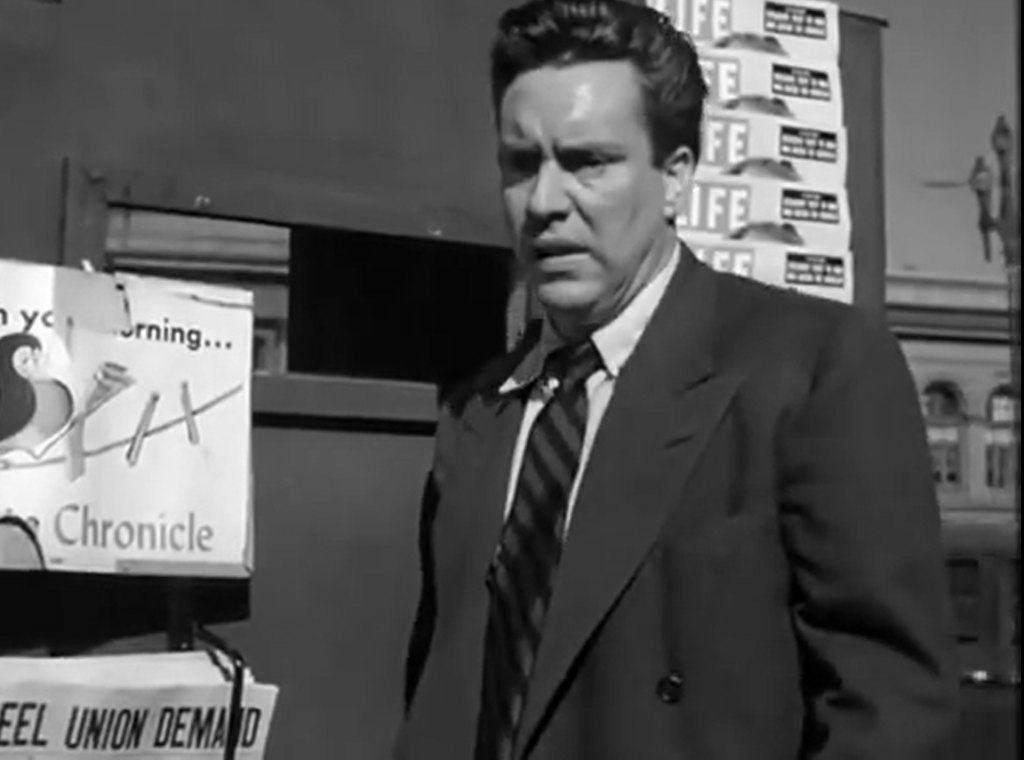
While “the story gets a bit confusing” (and thus tends to drag during its second third), the film as a whole remains compelling, and, amazingly enough, never feels “too morbid to sit through” despite knowing that Bigelow is done for from the beginning. Indeed, the flashback-heavy script features a surprising amount of levity, particularly during the early San Francisco hotel sequences, as Bigelow ogles every reasonably attractive female in the joint (and Dimitri Tiomkin’s energetic score adds silly sound-effect punctuations).
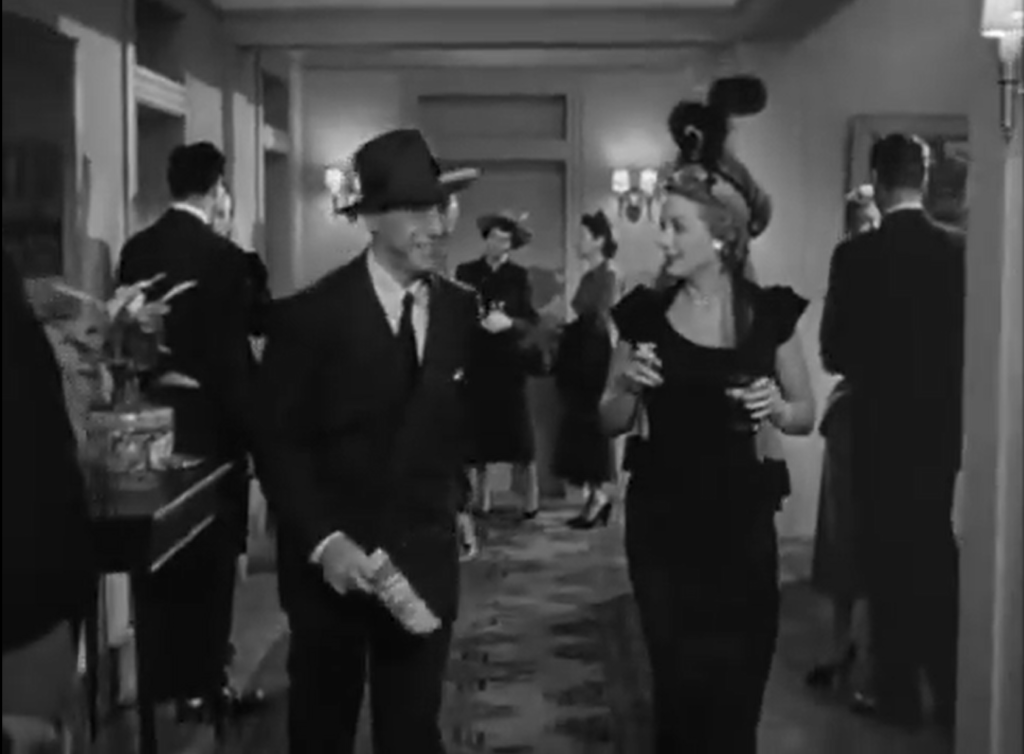
Meanwhile, the supporting cast’s B-level performances nearly all border playfully on camp: watch Pamela Britton (as Bigelow’s clingy secretary girlfriend) run an emotional gamut from flirtatious to pissy to maudlin to rapturously romantic:
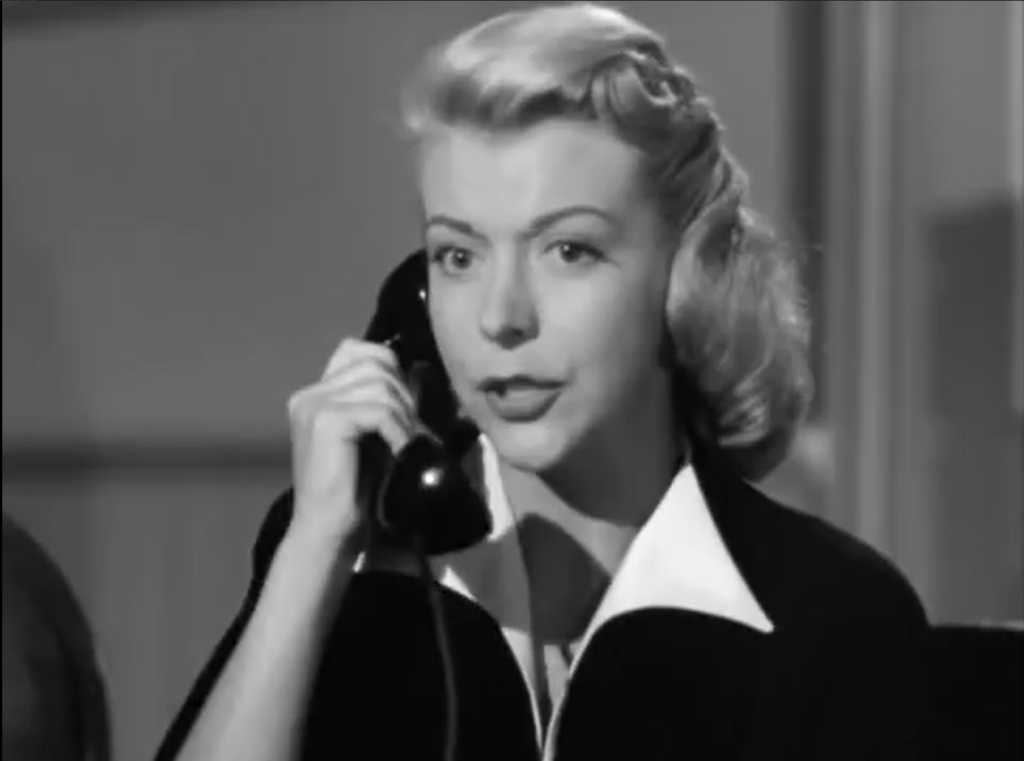
or toothy Neville Brand in his screen debut as a psycho thug with shifty eyes.
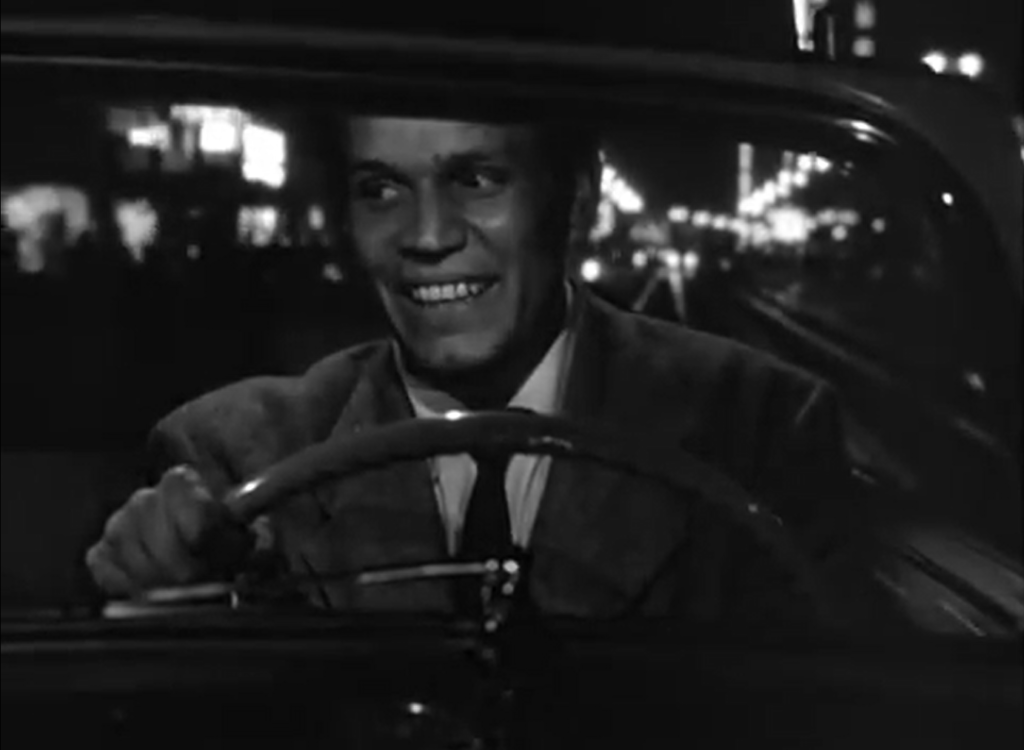
Some have complained that cinematographer Ernest Laszlo fails to establish noir-ish contrasts in lighting, but this ultimately adds to the film’s effectiveness: Bigelow’s nightmarish situation — taking place in real-life San Francisco and Los Angeles locales:
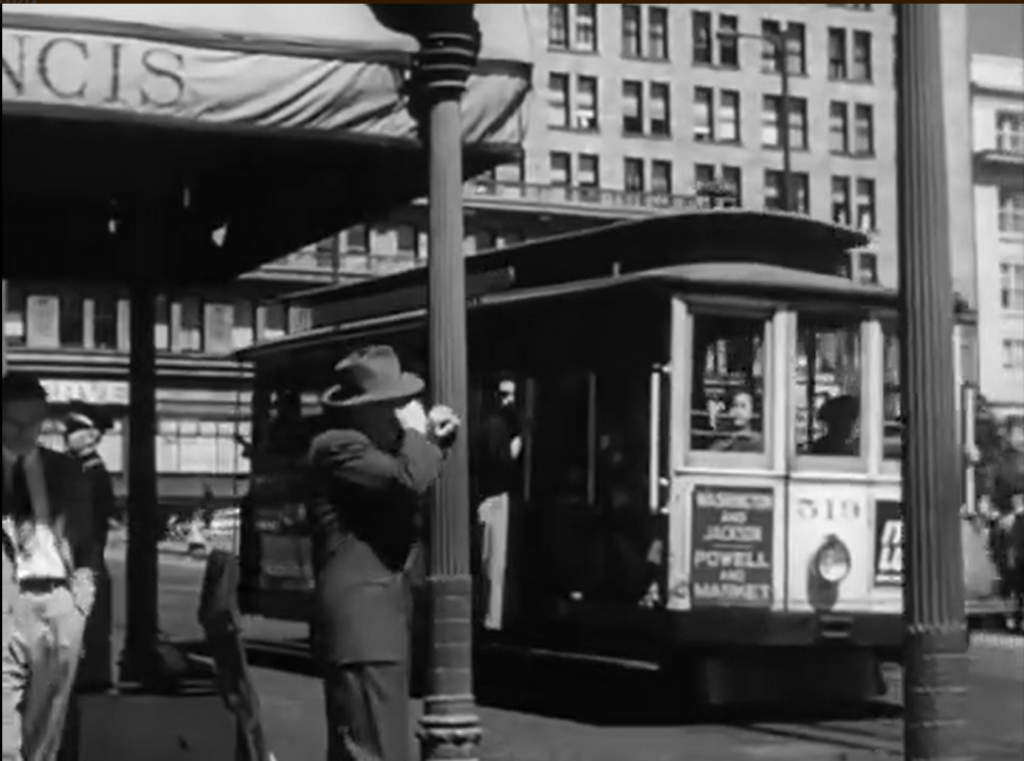
— is very much embedded within day-to-day reality; the scary point here is that anyone (you, me) is at risk for murder simply by being alive. And it should be noted that while Bigelow may be essentially an “innocent nice guy”, he does act like a bit of an immature lout, given that he can’t wait to get away from his fiancee, and considers sleeping with an attractive woman he’s just met at a bar:
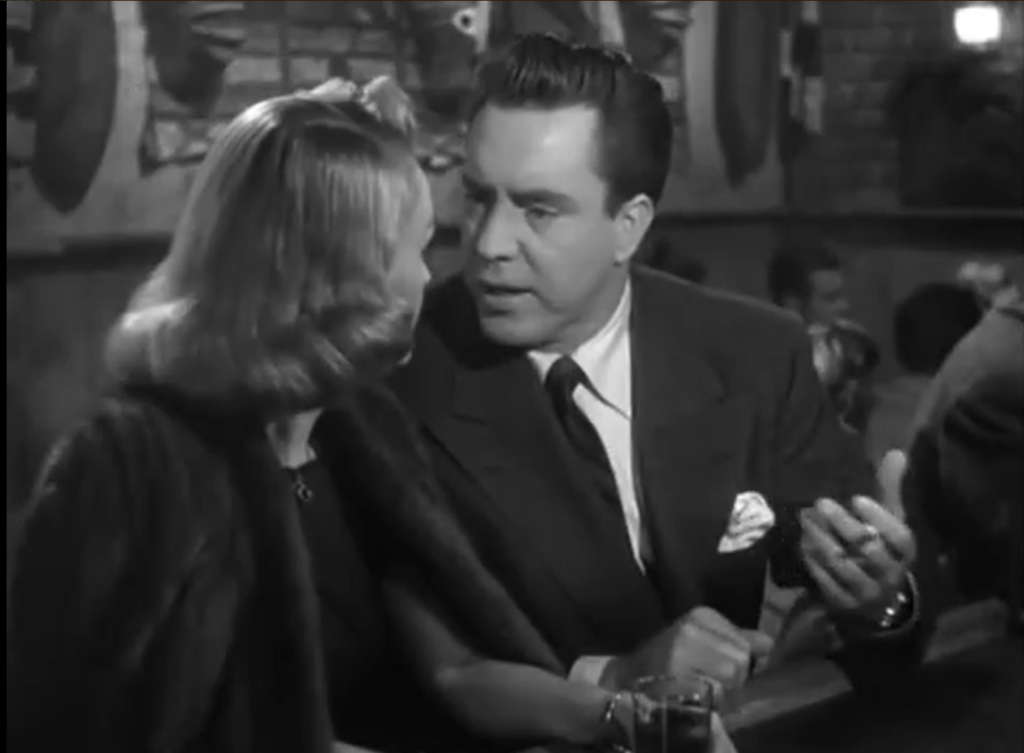
To this end, it could be argued (along the lines of 1950s morality) that he “deserves” his fate. Indeed, the story is framed as an unwitting character arc, with Bigelow forced to recognize — too late — the folly of his ways.
Redeeming Qualities and Moments:
- Edmond O’Brien as Bigelow
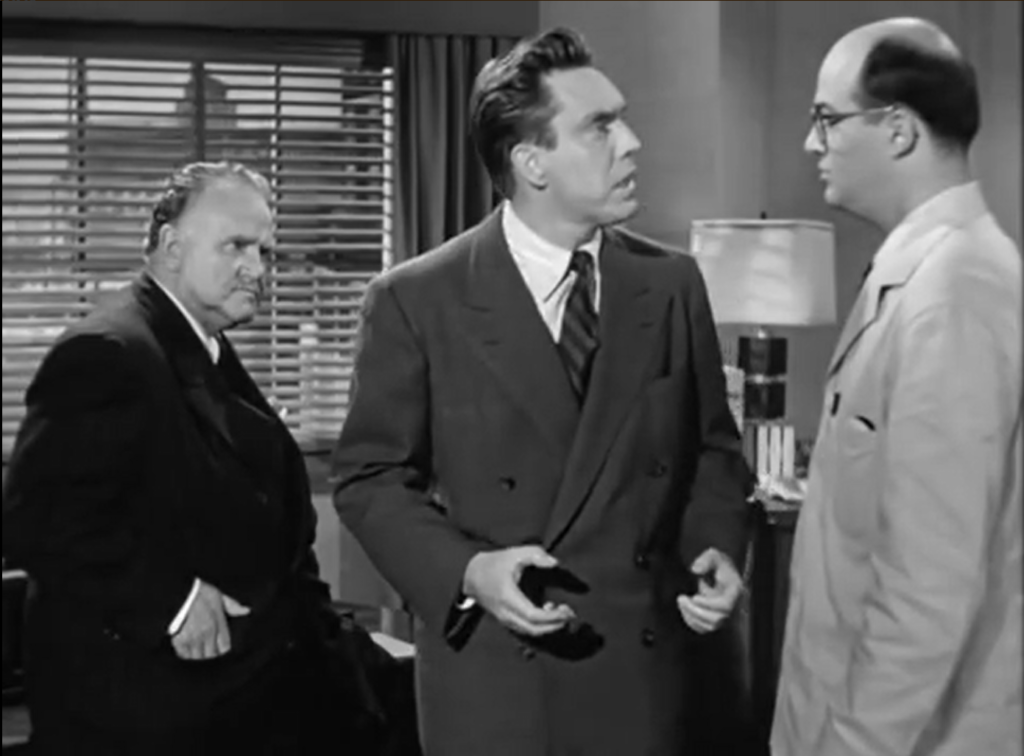
- An effectively nightmarish script
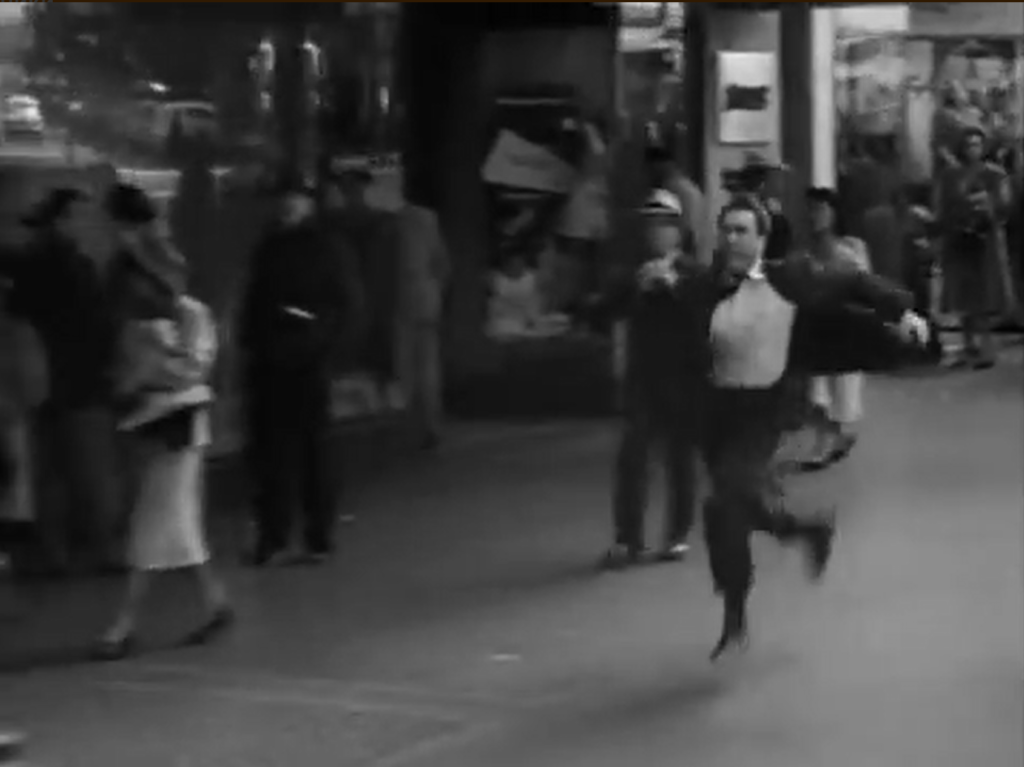
- Excellent use of San Francisco and Los Angeles locales
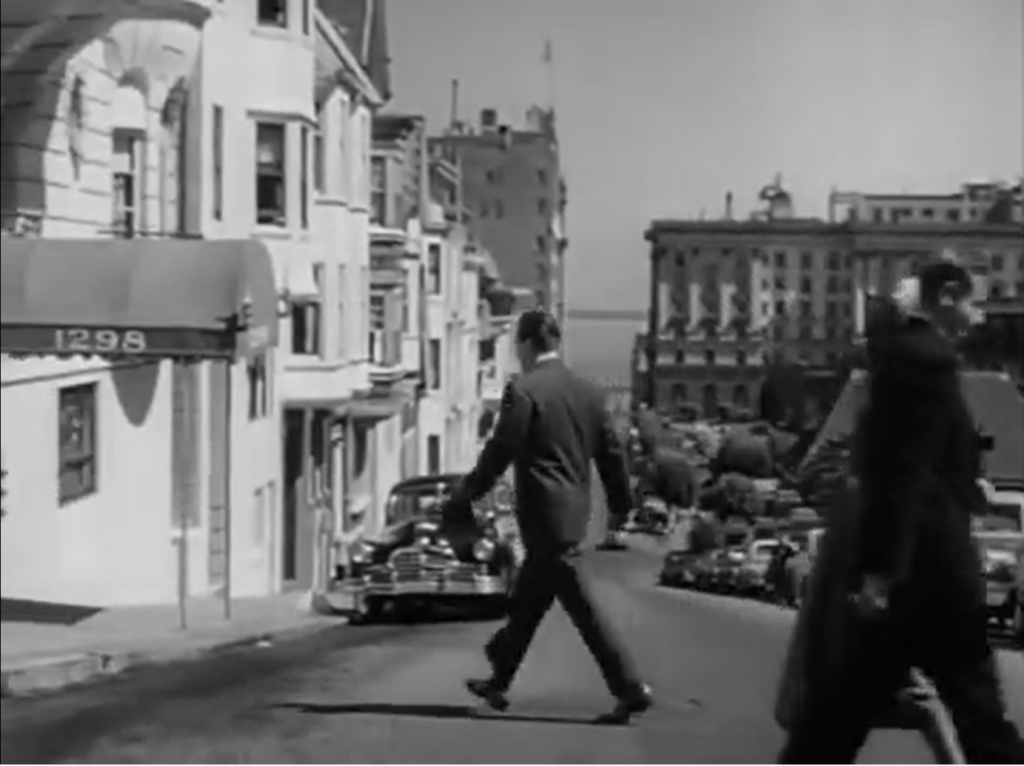
- Neville Brand (in his screen debut) as a psychotic hood
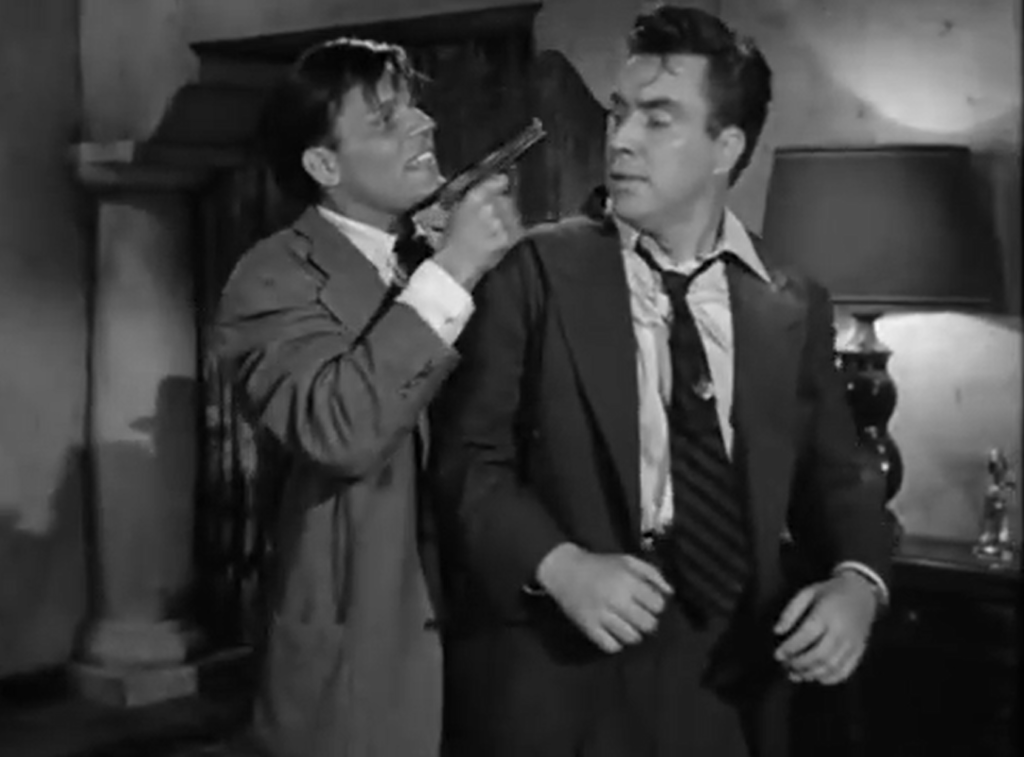
Must See?
Yes, as a classic of pulp noir.
Categories
Links:
|
One thought on “D.O.A. (1950)”
Yes, a wild ride of a must.
The best thing about this movie (what makes it a must) is its premise – from which much mileage is milked. Admittedly, things do get confusing along the labyrinthine way – at some point, so much so that you have to stop and remind yourself that the logic of the thing is so outlandish that you just have to suspend disbelief and go with it. (You’ll be glad you did.) In Rubik’s Cube fashion, the ‘colors’ of the plot elements don’t match until they do.
Which, of course, makes it a fun film to re-visit from time to time. There will be something (or things) to catch that you didn’t catch before.
I don’t really agree that O’Brien’s character “deserves” his fate – just because he’s something of a “lout”. But I think the film has a larger design than that anyway. It seems to be operating on a more existentialist, Kafka-esque level: absolutely anybody can be screwed, no matter what. As O’Brien basically says at the end of the film: “All I did was sign off on a bill of sale.”
The film has a major flaw in the character of O’Brien’s girl, played by Pamela Britton. As written, the character is little but a shrew, constantly insecure and constantly throwing roadblocks in O’Brien’s way – which makes it rather unbelievable that O’Brien would eventually declare the love he claims to feel for her. Through no fault of the actress, the character is something of a bitch…until she becomes oddly heroic.
Camp does come into play here in Brand’s cartoonish thug, obsessed as he is with O’Brien’s “belly”.
And this is indeed O’Brien’s most iconic role. Always a sturdy presence on film, O’Brien goes uniquely whole-hog here – so much so that, when he finally confronts his main nemesis, he takes on the manner of Papa Bear in ‘Bugs Bunny and the Three Bears’.